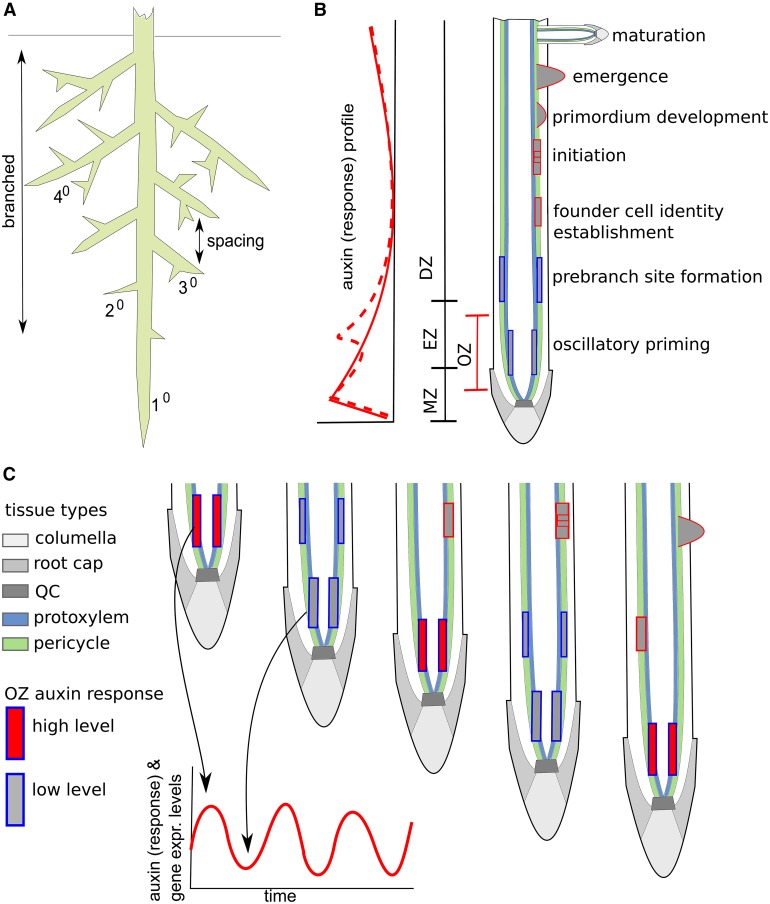Figure 1.
Root System Architecture and the Dynamics of Lateral Root Development.
(A) Schematic overview of the major determinants of root system architecture.
(B) Left: Schematic overview of the root tip longitudinal auxin (response) profile with oscillation induced transient elevations indicated with a dashed line. Right: Formation of a single lateral root goes through the indicated characteristic sequence of stages as it progresses through the different longitudinal zones of the root. MZ, meristematic zone; EZ, elongation zone; DZ, differentiation zone; OZ, oscillation zone. Color coding as shown for (C).
(C) In protoxylem cells of the basal meristem, cells undergo temporal priming oscillations in auxin concentration and/or auxin response levels as well as oscillations in the expression of many other genes that lead these cells to pass on a priming signal to the overlying pericycle cells. Throughout root growth, these primed cells become displaced, translating into a spatial pattern of sites competent for forming a lateral root. An additional mechanism is responsible for the left-right symmetry breaking that ensures lateral root formation on one side of the root. Given that it is currently not known at which stage this symmetry breaking occurs, we did not indicate it in the sequence of events shown here.

